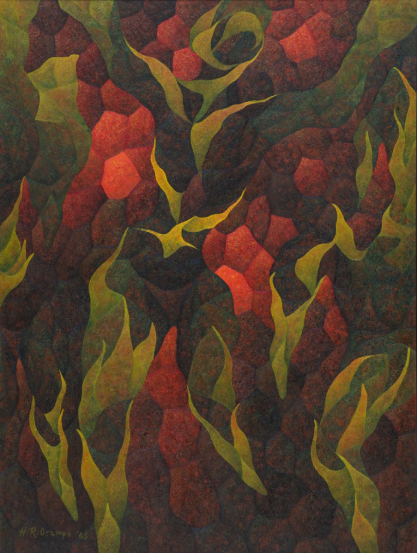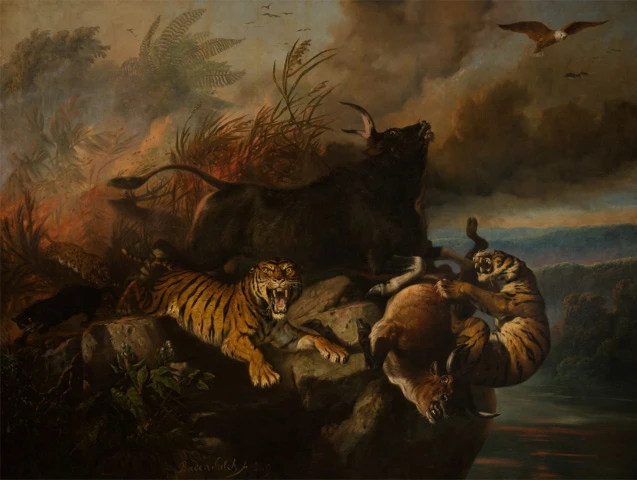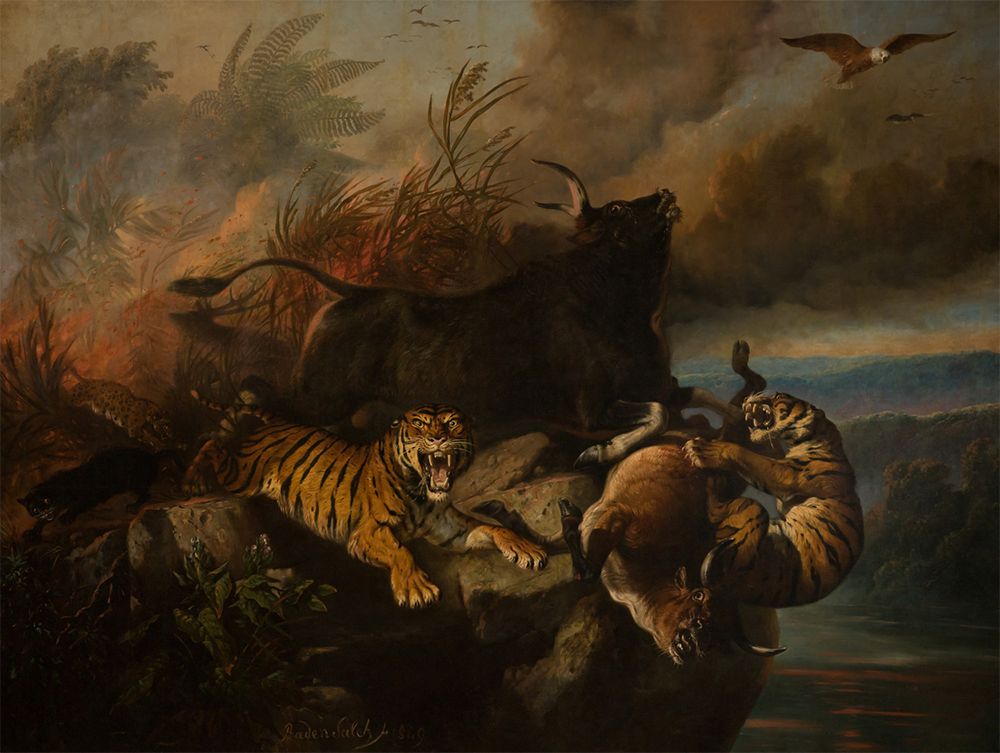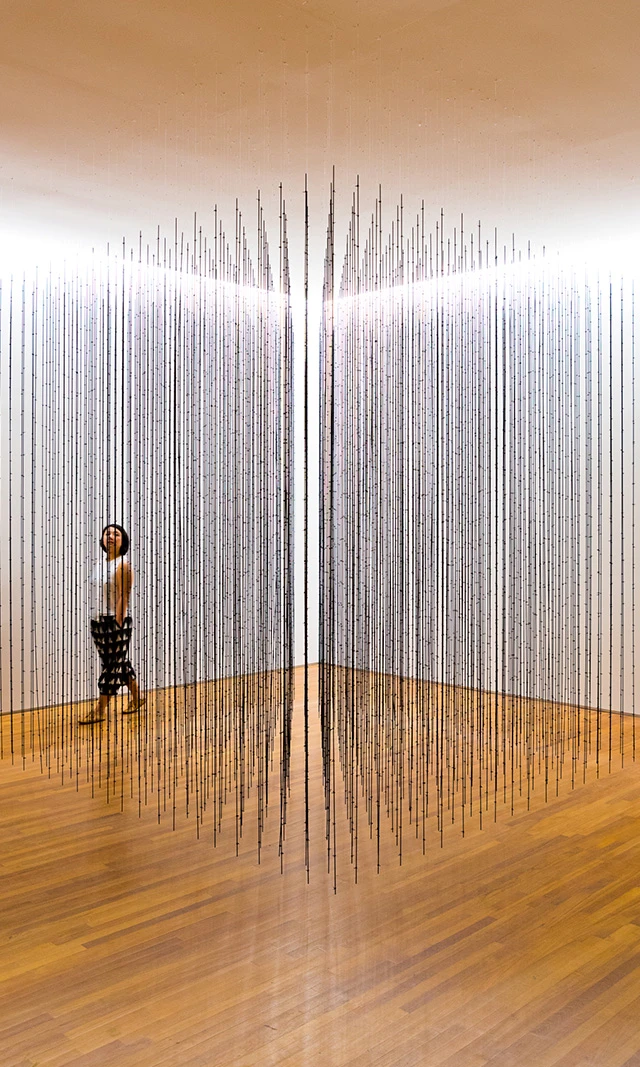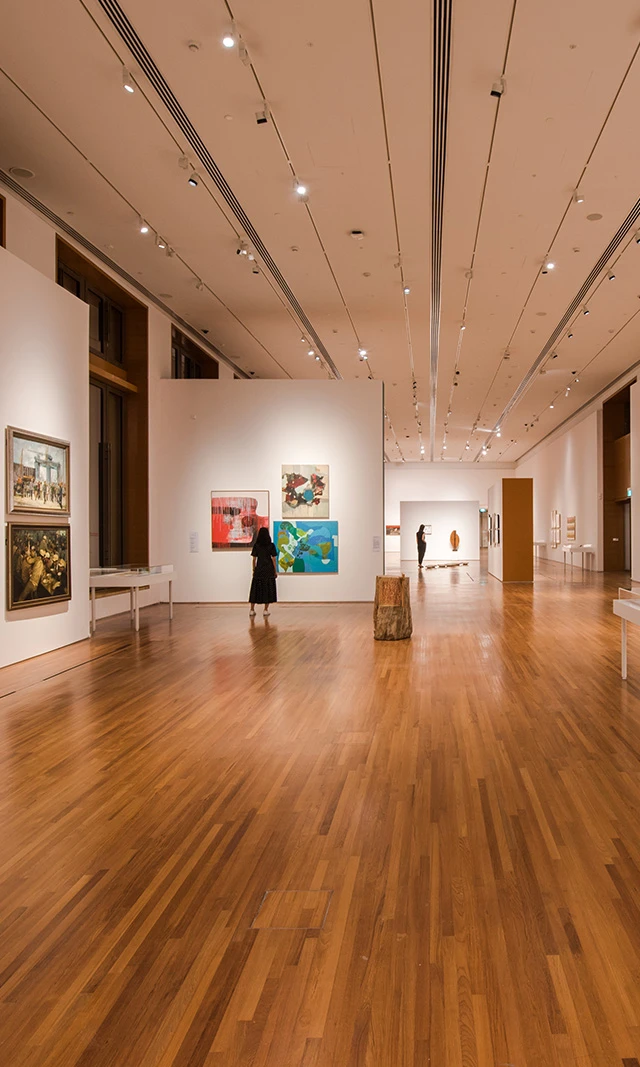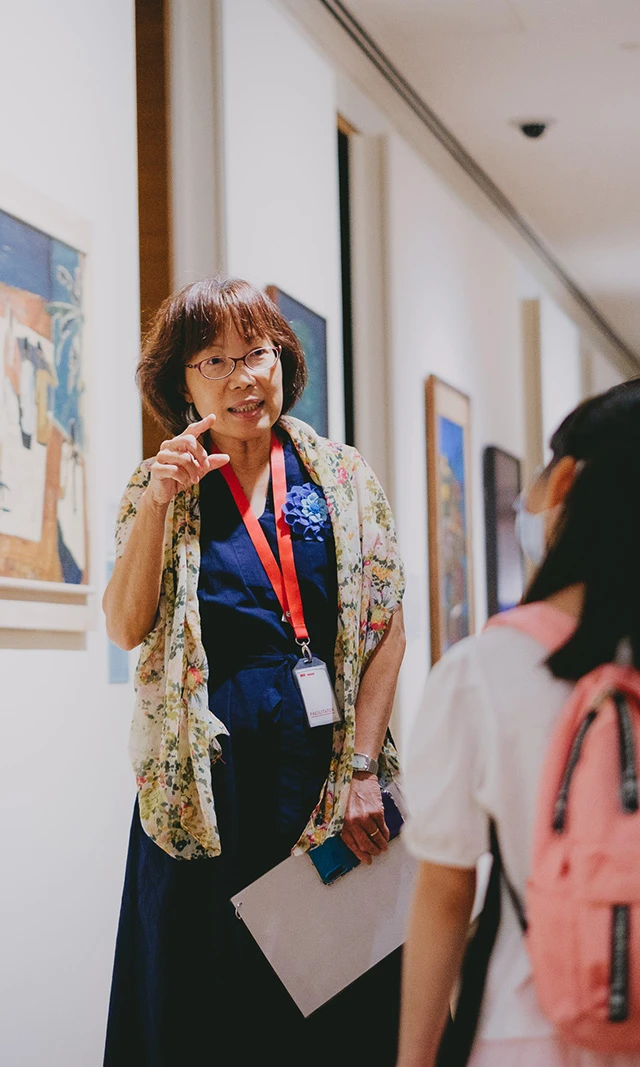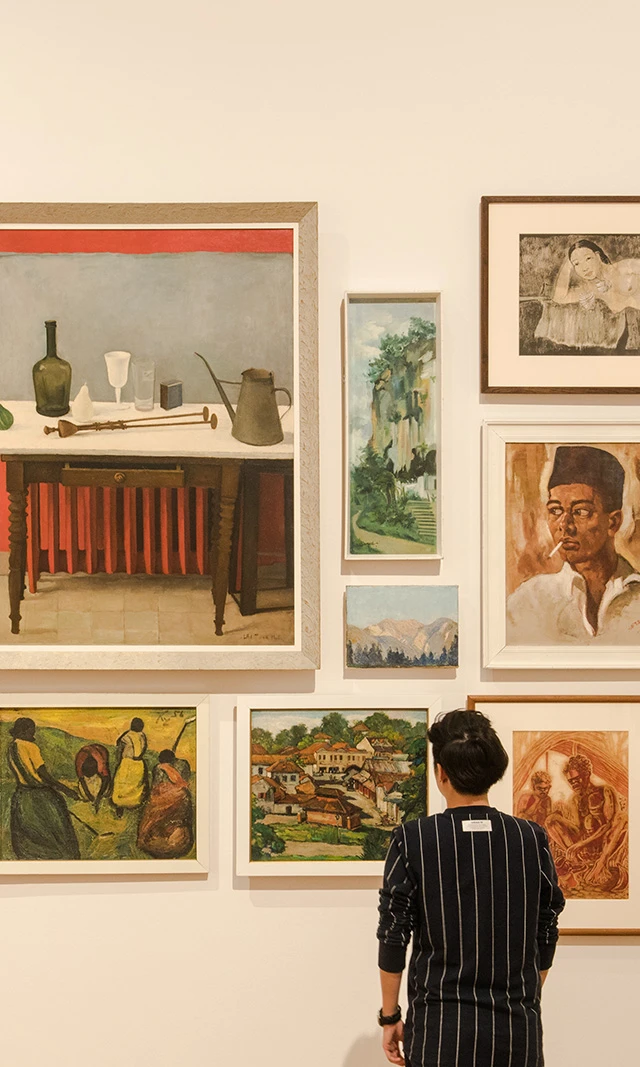Face
Welcome to the Slow Art Guide for Face by Fua Haribhitak brought to you by National Gallery Singapore.
Inspired by the principles of slow looking and mindfulness, each episode of the Slow Art Guide will take you on a deep dive into one artwork in the Gallery. This experience is about slowing down, taking your time to look at and contemplate visual art and savouring it in a conscious and deliberate manner.
As you immerse yourself in this sensory and reflective process, we invite you to be present with your thoughts, emotions and body sensations, which may feel quite intense or overwhelming at times. If this is the case for you today, please feel free to step away from this audio experience and head over to the Calm Room or any other space that feels safe to rest.
By the end of your experience with the Slow Art Guide, we hope that you will have a deeper emotional connection with the artwork and feel more grounded and rested in the present moment.
Take a moment to be with yourself. Express gratitude to yourself for taking time out of your busy day to care for your mind, body and spirit by connecting with visual art.
Let’s begin with a simple breathing exercise. Focus on the sensation of your breathing. There is no need to change or modify anything. Just breathe. You may choose to close your eyes and rest them or maintain a soft gaze. As you inhale and exhale, observe the rhythm of your breathing. Pay attention to your breath: Is it long and smooth, or short and quick?
If you wish, you can put a hand on your belly. Feel the warmth of your hand on your body and the affection it conveys. Sense the expansion and contraction of your belly with each breath. Allow your body to rest as you breathe. Allow your breath to support you.
Breathe in, breathe out. Breathe in, breathe out.
If your eyes have been closed, slowly open them.
This is Face by Fua Haribhitak.
As we explore this artwork together, feel free to move around it in a way that is most comfortable for you. You may even sit on the gallery floor in front of the artwork.
We will give you some time to take in the artwork on your own. Think about what you are seeing in front of you, and how it makes you feel.
What catches your eye immediately, and how does the work make you feel? What are you most curious about?
Now, let’s take a look at the artwork together. See if you can identify all the facial features present in this artwork. Which feature stands out the most to you? Is it the left eye or the right eye? Or the nose, or mouth or chin?
Let’s explore the thoughts or emotions within this painting. What feelings can you perceive from the expression on the face? Does it seem surprised, curious or calm?
Imagine that the person the face belongs to is trying to say something to you. What do you think they would say?
Notice how the face is embedded within various shapes and colours. Where does the face end and the background begin?
The painting has a diverse colour palette, with shades of violet, magenta and green. These hues highlight the fragmented shapes, the boundaries that distinguish them, as well as their intersections with each other.
Does this mosaic image remind you of anything? Perhaps the experience of looking through a kaleidoscope, or even the experience of watching sunlight reflect off a body of water?
Allow your mind to wander and explore any associations that may arise.
Observe the colours in the centre of the artwork, especially the darker shades that define the facial features in the painting. Notice how they are in contrast to the lighter pastels surrounding them.
Could this composition represent the subject's thoughts? Emotions swirl around on their face, revealing their inner self.
Spending time to sit with our thoughts and feelings can be an important exercise for understanding our mind, body, and emotions. This is one approach to meditation, which is simply to be mindful of what is happening, as it is happening.
Give it a try. Be still and close your eyes gently if you wish to or maintain a soft gaze. Bring your attention back to your breathing. Take a moment to savour each breath. Connect with the present moment.
Now, gently holding the image of the artwork in your mind, take a moment to focus on your own face.
Beginning from your head, notice any areas of tension. As you take a deep breath, imagine a gentle wave of relaxation flowing from the crown of your head down to your shoulders.
With each exhale, allow any tightness or stress in your temples, forehead or between your eyebrows to be released.
Now, bring attention to your eyes, nose, cheeks and jaw. Sense how they are feeling.
Is your jaw tense? Try letting your lower jaw hang open slightly. Feel the difference.
Gently shift your focus to your shoulders. Lift them slightly towards your ears as you inhale. As you exhale, let them drop down and feel the tension melt away.
You may gently roll your shoulders forwards and backwards as you try to tune in to any sensations or areas of tightness.
Gradually, with each breath, let your awareness drift downwards, moving through from your shoulders and chest and all the way to your feet. Take note of any sensations—warmth, tingling, pressure.
Now, observe what thoughts and emotions are present with you at this moment.
As you scan your body, recall the emotions expressed by the face in the artwork earlier. Do any of them resonate with you? Can you name what you are feeling?
Where do you feel these emotions in your body? How do they make themselves known in your body? For instance, does joy feel like a lightness or a fluttering in your chest? Does anxiety live in your belly, or in your shoulders? Does sadness weigh you down, or flatten you out? Be curious about these bodily sensations.
Now, slowly scan your body again and observe if it feels any different. Embrace whatever you discover and know that there is no right or wrong way to feel.
After all, emotions are fluid; they will always shift and change. Acknowledge and honour the present experience.
Finally, expand your awareness to encompass your entire body. Breathe as though your whole body is breathing. With each breath, anchor yourself by sensing the ground is supporting you.
Breathe in, breathe out. Breathe in, breathe out.
As we come towards the end of this meditation exercise, you may wish to reflect on this question: How can I be more curious about what is happening within me, and around me? What are the colours and shapes of my inner thoughts and feelings?
If your eyes have been closed, slowly open them and re-familiarise yourself with your surroundings. Take a moment to feel the connection between your breath and the present moment.
Now, focus your gaze on the artwork before you.
Painted between 1954 to 1956 by Thai artist Fua Haribhitak, this work is from the most well-known period of Haribhitak’s career, from when he was studying at the Accademia di Bella Arti in Rome. A restless artist, Haribhitak struggled against rigid learning curriculums and studied in multiple schools. He is known for experimenting in different styles, notably impressionism and cubism. Cubism is an art style that originated in Paris in the early 1900s, where artists imagined what it would be like to look at something from different angles all at once. In cubist works, people and objects are often depicted as a jumbled assortment of parts.
Compared to Haribhitak’s larger body of work, Face shows a high degree of abstraction. Here, he uses only fragmented shapes to depict facial features such as eyes, nose and lips. In essence, Haribhitak provides us with pieces of a face to assemble in our minds.
We have now come to the end of this episode of the Slow Art Guide.
If you enjoyed this episode, you can check out our other episodes, which feature different artworks. Each Slow Art Guide is developed with unique slow looking and mindfulness practices to help you look at an artwork meaningfully. Artworks featured in the Slow Art Guide are from The Care Collection, a selection of artworks from the National Collection that are thematically organised for programmes that support well-being.
If you need a dedicated space for sensory and emotional rest, you can visit the Calm Room, which is located in Basement 1 of the Gallery’s City Hall Wing. In the Calm Room, you can experience a ten-minute focused mindfulness exercise.
We now invite you to continue your journey through the Gallery. Take your time to appreciate the art all around you.
Artwork details
Frame measure: 74.6 x 64.5 cm

